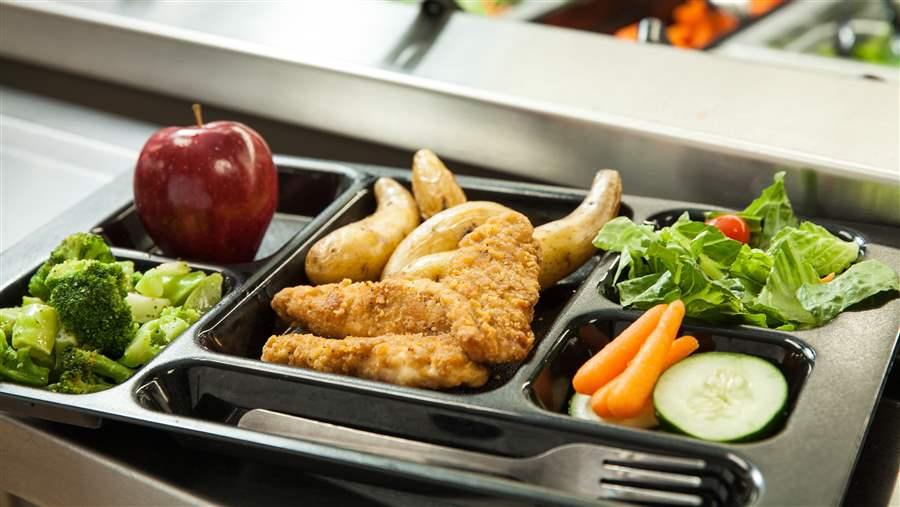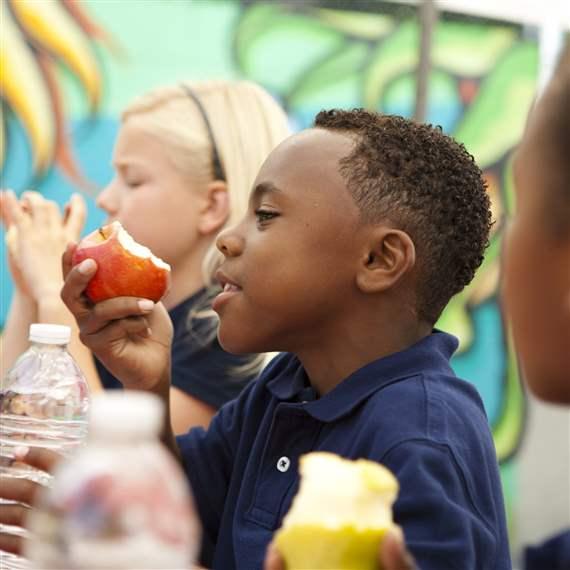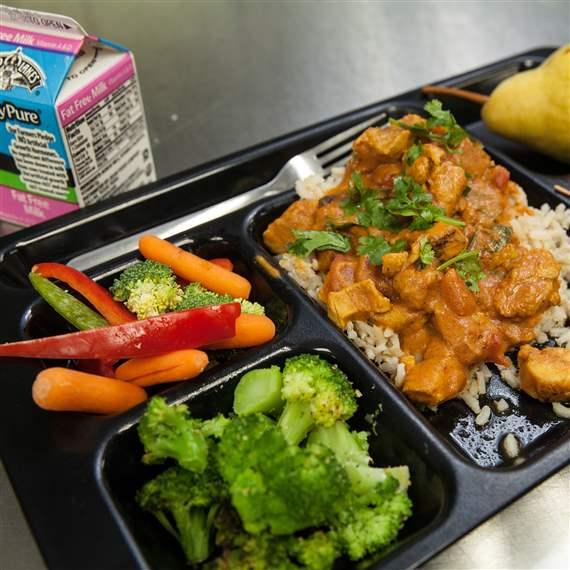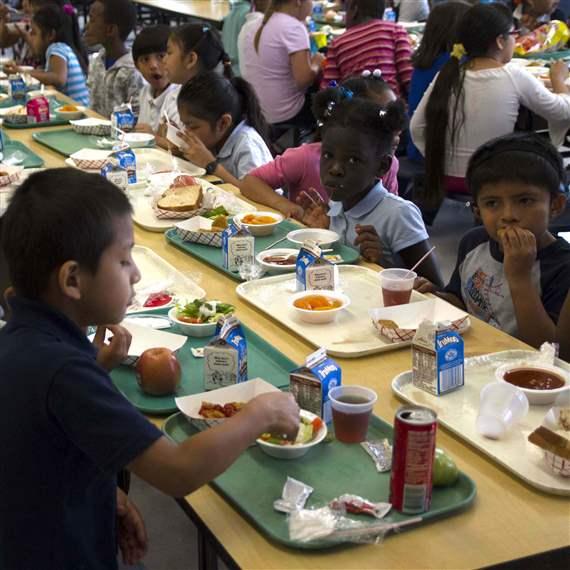Five Facts About School Meal Programs

Today’s school lunches, such as this one served in Menomonie, Wisconsin, are rich in fruits, vegetables, and whole grains and low in saturated fat and sodium.
More than 30 million students—about 3 in 5 schoolkids—participate daily in the National School Lunch Program (NSLP), even though many of them and their families may not realize it. Created by Congress in 1946, the NSLP helps pay for 5 billion healthy lunches served each year in 95 percent of public schools and thousands of private ones too. The School Breakfast Program (SBP), established 20 years later, provides morning meals to about 14 million children, a number that’s been rising steadily.
Here are five facts about these far-reaching and sometimes misunderstood programs.
1. All students in participating schools have healthier food and drink choices because of these programs. That’s because breakfasts and lunches, a la carte menus, and snacks sold in school vending machines and stores must meet a consistent set of science-based nutrition standards set by the U.S. Department of Agriculture. In 2012, USDA began strengthening these guidelines, some of which had not been updated in 30 years. The revised standards ensure that all students are offered more fruits, vegetables, lean proteins, and whole grain-rich items, and that foods and drinks on campus do not have excess saturated fat, sugar, and sodium.
2. These programs support affordable food for all students. Schools’ routine encouragement that families apply for free or reduced-price meals can give the impression that national meal programs benefit only lower-income students. The truth is, kids who pay full price represent 27 percent of the daily participants in the NSLP and 15 percent in the SBP. Schools receive a federal reimbursement for each meal children buy, regardless of household income, and for those provided free of charge, which helps districts offer nutritious, quality meals to all kids. Students receive an entree, three healthy sides, and a carton of milk for less than what many people spend on their daily coffee.
3. Healthy school meals improve kids’ eating habits. Major studies have shown that children are eating more of their nutritious school lunches and wasting less food since districts implemented USDA’s updated nutrition standards. For example, middle school students consumed larger shares of their entrees and vegetables in 2014 compared with the year before the stronger standards took effect.
4. Today’s school meals offer healthier—not fewer—calories. Under current guidelines, meals can provide students essentially the same total calories that were typical prior to USDA’s revisions. Lunches offered in high schools, for instance, have to average no more than 850 calories over the week—seven calories less than the average offered before updated standards. Children are able to get the energy they need to learn and grow, but with the healthier standards, it’s just coming from more nutritious foods.
5. Students’ cafeteria choices are increasing. USDA’s updated standards require schools to serve fruits and vegetables with every meal and to offer a variety throughout the week to give children access to all the nutrients important for their health. Menu options are expanding in other ways too. In just the first year under higher nutrition standards, a third of elementary schools expanded the selection of entrees on their menus.
Check out the resources below to learn more, and plan a school lunch date to see firsthand what’s working in the school cafeteria. Five Facts About School Meal Programs:
Additional Resources
More From Pew Five Facts About School Meal Programs:



